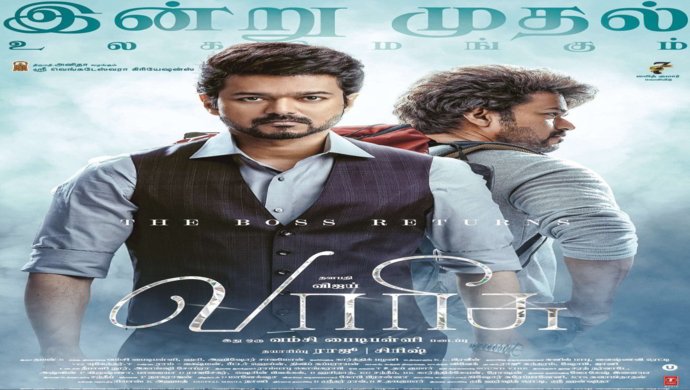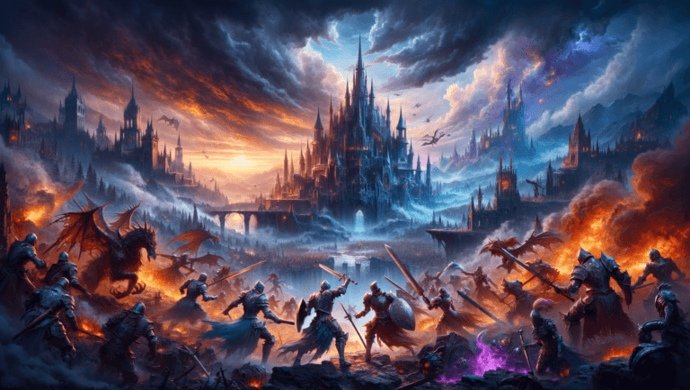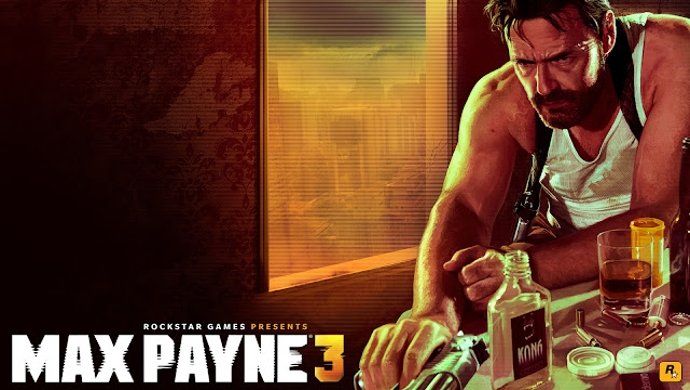
As of the time of this writing, Elden Ring has an average player count exceeding 25000 for the last 30 days according to Steam Charts, and in the months since it was released, the Steam player count has never dipped below 20000, placing it in the top 5% of Steam games in terms of active players.

Perhaps the game is easier than other souls-likes? No. As of June 2023, only 8% of owners on Steam had beaten the game. 25% of them hadn’t even beaten the first boss: Elden Ring is a gorgeous world that many owners have not even begun to explore.
To wit, you have a best-selling, incredibly difficult but frequently played game, which makes no sense. Why would so many throw themselves at Margit, the first boss, only to be thwarted for the umpteenth time? Why would so many buy the game well after its overwhelming difficulty is made obvious in any playthrough?
In this blog series, we will discuss how the souls-like – a radical reinvention of the role-playing and fighting games – creates a challenging but ultimately fair interactive experience, rewarding your victories and forcing you to learn from your failures. In a subsequent blog, we will discuss some major souls-likes, and how these games took the genre in new, unexplored directions. And in our final blog of the series, we will delve into how these games – known for focussing on single-player – innovate even with online play, adding a variety of features that can both help and hinder the gamer.
But before we answer any questions about the souls-like, we need to identify what it is
What is a Souls-Like? What are its Key Traits?
At its most basic, a souls-like features very difficult boss fights, inhospitable environments, unforgiving combat, preset checkpoints and various other elements meant to make the game hard but fair. A souls-like incorporates gameplay elements of developer From Software’s titles, like the Dark Souls trilogy, Demons’ Souls, Sekiro: Shadows Die Twice and others – many of which were directed by Hidetaka Miyazaki. The souls-like is not a genre unto itself, but reinvents the fighting and RPG genres. This is why we study the shared traits of these games, rather than treating them as a subgenre.

What are the Key Features of a Souls-Like?
- Fixed Difficulty: The player can’t change the difficulty level of these games. The entire user base has a level playing field.
- Unforgiving Combat: Just a few missteps will lead to player death. Combat moves such as attacks, blocks and dodges cost stamina (or a similar resource) and leave you vulnerable if completely depleted. Regular enemies are as strong as the player, if not more.
- Pattern Memorisation: The player must memorise enemy attack patterns and placement, and also the location of hazards or traps in order to succeed.
- Hostile Level Design: Navigating the environment is a challenge, with tough enemies packed in tricky locations.
- Preset Checkpoints: The player has to reach and activate checkpoints manually to use them, and will respawn there on death. The checkpoint is also a place to level up your skills. Activating a checkpoint respawns all enemies in the area except for bosses.
- Loose, Indirect Narrative: The games do not feature explicit cutscenes or plotlines. There may be a quest log, but no quest markers to guide the player to their objective. The narrative unfolds as the player explores the world, and uncovers its lore by talking to NPCs and slaying bosses.
- Penalty on Death: Players may lose unused items, XP and resources (called Souls in the Souls games and Runes in Elden Ring) on death, but they may be able to return to where they died to reclaim lost resources
We class all souls-likes as ‘masocore’. As defined by game designer Anna Anthropy, a masocore game subverts the player’s expectations, and the genre conventions that they think they know. Souls-likes deliver a masochistic and hardcore experience that ultimately rewards the player with an immense sense of achievement after beating a challenge that appears to be insurmountable.
True souls-likes batter and beguile you into thinking that failure is inevitable, when it isn’t. Death is central to learning from mistakes, and eventually defeating super-powered enemies. Both difficulty and deception play an equal role in a souls-like’s design as it constantly subverts the assumptions you make about the game.
Mastering combat, sussing out the game’s various illusory challenges and tricks, and eventually winning by paying attention can leave you immensely satisfied. This is probably why these games have a fervent fan base.
Souls-likes often explore dark fantasy themes. To paraphrase blogger Josh Bycer, in a souls-like, the world is ruined, the good guys are dead, there is nothing to save, and you are just trying to make things a little better (you will fail, however). You are not Geralt the White Wolf, the Dragonborn or John Shepard.
Bloodborne is a Lovecraftian horror fantasy. The Nioh games are filled with Yokai, monsters drawn from Japanese folklore. Demons’ Souls is set in a world overrun by soul-devouring creatures. The most prominent souls-likes are set in a carefully crafted and oppressive atmosphere that leaves no doubt that you are entering a world of pain. In that regard, there is no deceit.

How Does a Souls-Like Differ from Other RPGs?
No matter how much you level up in a souls-like, victory hinges on the skill with which you use your stats, and the care with which you choose your stats and build.
In normal RPGs, use determines progression, and it is the player character who levels up. You can upgrade an item by using it, wield this item to gain more experience points and reinvest these points into making the item even better. You can become a tank with sufficiently upgraded armour, and a one-hit killer with an overpowered weapon.
This may not work in a souls-like, though it is possible to craft a build that gives you an overwhelming advantage. If you don’t perfect your build, your buffed up armour will probably absorb a few more blows from bosses before you die, and regular enemies can kill you if you cheese them with a powerful weapon – they will dodge, time their block and follow it up with a vicious and mortal counterblow. Levelling up in a souls-like requires you to carefully manage XP, and even after levelling up successfully, you need to grow skilled at whatever attack move or ability you gain. Not only do you have to grind to unlock a perk or skill, you have to grind again to master it. Skill determines progression and, in a sense, you are the one who levels up.
In other RPGs, not all skills are meant to improve your ability to fight. In Starfield, there are entire skill trees with no relation to combat, allowing you to role-play as a planetary explorer, a space-faring merchant or an entrepreneur managing a business empire.
In a souls-like, you aren’t going to be any of these things. You fight enemies, mini-bosses and bosses while navigating hostile levels and every skill in every skill tree is meant to give you a tactical edge in battle, and that’s it. This is why you should put extra care into every level up, every skill, every buff – they aren’t there to let you live out some RPG fantasy, but to help you ‘git gud’.
This raises a question: are you truly role-playing as anyone if the entire levelling system is based on combat? It is possible that future souls-likes might introduce other role-playing mechanics, just as Elden Ring transplanted the souls-like into an open world. However, no matter how developers flesh out RPG mechanics in future souls-likes, player skill, rather than the player character’s level, will determine the progression along any skill tree.
How to Survive in a Souls-Like, or How to ‘Git Gud’
The phrase ‘git gud (get good)’ will forever be linked to the souls-likes: becoming skilled is the key to surviving and winning in these games. You must also cultivate patience and perseverance to cope with the various challenges these games hurl at you.
How Do You ‘Git Gud’ at Playing a Souls-Like?
- Be a Survivalist: Souls-likes do not feature typical survival mechanics like the need for food, clothing and shelter. But you have to garner resources needed to level up, unlock skills, and purchase key in-game items, all of which play a critical role in killing bosses and thus progressing to new areas. Dying to lesser enemies and losing resources can thus be infuriating. Learn enemy weaknesses, patterns and placements so you can clear an area again and again and level up to improve your odds against the boss. When weakened, flee from a fight if you can – whether it’s with a boss or an enemy mob – and return healthy. Lure away enemies from their groups if possible: divide and conquer.

- Learn How to Deal Damage: One of the first surprises a souls-like throws at you is that your attack buttons don’t really do much. Enemies dodge, block, and counterattack expertly. Even if they don’t, repeated attacks will drain your stamina, leaving you totally exposed. However, these games offer move sets that can inflict significant damage, only if they are executed within a narrow time window. In the Souls games and Bloodborne it’s the parry and riposte, in Sekiro: Shadows Die Twice, you can follow up ‘perfect deflects’ with a deathblow. In Nioh, a timed button press triggers a ‘Ki’ pulse that rapidly regenerates your ‘Ki’, or stamina, letting you deal more blows to enemies.
- Perfect the Defensive Moves: Dodge rolls to get out of, or under, the boss’ range. Ducking to evade high attacks. Leaping to avoid sweep attacks. Timing the block right, or at least blocking instead of spamming attacks and exposing yourself. Getting far, far away from unblockable attacks. No matter what build you choose, and no matter what high-damage move the game has, defence is critical to surviving in a souls-like.
- Study the Game, the World and the RPG System: In other RPGs, any build can be effective, but souls-likes may not offer such flexibility. This is why the Nioh games allow you to respecialise or ‘respec’ your skill points because tactics that work in early missions may not work in harder levels. The set of starting builds offered in souls-like can be considered a deviously hidden difficulty slider: the worst builds almost guarantee failure, and the best offer a fighting chance. In the Dark Souls trilogy and Demons’ Souls, the magic build can actually be overpowered. Souls-like world-spaces can offer helpful hints (some of these are left by other players and are visible only when playing online). Read guides and watch playthroughs if you get stuck at a certain stage – this is particularly useful in such games as they offer little to no guidance.





